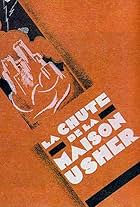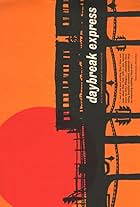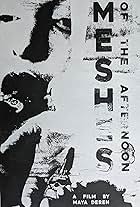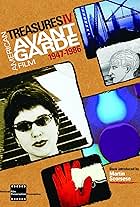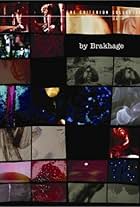Essential, integral experimental work from the late 1950s is an incredible dance of montage and super-imposition starring none other than New York City's various bridges, transforming them i... Read allEssential, integral experimental work from the late 1950s is an incredible dance of montage and super-imposition starring none other than New York City's various bridges, transforming them into an urban jungle (jazz version) or an alien landscape (electro-acoustic version)Essential, integral experimental work from the late 1950s is an incredible dance of montage and super-imposition starring none other than New York City's various bridges, transforming them into an urban jungle (jazz version) or an alien landscape (electro-acoustic version)
- Director
Photos
Storyline
Did you know
- TriviaMusical Tonalites used in Forbidden Planet and composed by Bebe and Louis Barron are also used in Bridges-Go-Round.
- Alternate versionsTwo versions of the film, often shown back-to-back, differ only in the soundtrack, one a jazz score by Teo Macero, the other an electronic soundtrack by Louis and Bebe Barron.
- ConnectionsFeatured in The Velvet Underground (2021)
Featured review
Shirley Clarke's Bridges-Go-Round is a short film played twice. Once with a sweeping jazz score and once with electronic music. There is no narrative, just sweeping images of the bridges of New York City. She records these structures driving across them and then superimposes images of the structural steel across the sky. Panning shots in opposite directions are superimposed. It could be argued that the superimposed shots seem to have no agenda other than artistic experimentation. A kaleidoscope of bridges with added coloured tints.
But the two 'versions' produce different reactions. The lifting jazz score emphasises the curves sweeping towards the sky, the pacing and editing, and the camera movements. The electronic score (by Bebe and Louis Barron, the same composers who scored the 'tonalities' for Forbidden Planet) directs our attention more to the abstract patterns produced as we observe the open steel structures outlined against the sky and against other images of the same bridge.
Many of Clarke's favourite techniques seem to hearken back to those used by the 'city symphony' genre of filmmakers. In a 1928 film by Joris Ivens, The Bridge, we see different viewpoints of a massive iron bridge in Rotterdam. In Bridges-Go-Round, Ivens' patterns of massive girders are apparent, but Clarke has added lyrical camera panning and superimposition to create a non-linear sense of movement. Many of Clarke's bridges travel 'into each other', creating a 'symphony' of geometrical shapes.
Other city symphony methods can be discerned in Clarke's work. Chronologically
1954 In Paris Parks in spite of its name, this early work focuses on people rather than the city, but still uses the collage structure common to city symphony filmmakers.
1957 The composite shots of Brusssels Loops are perhaps most easily identifiable as a city symphony.
1958 Bridges-Go-Round suggests a direct continuation of city symphony descriptions of a specific structure.
1959 The award-winning Skyscraper adds a coherent diegesis to the visual imagery, painting both a visual picture of a building and a 'story' of its construction.
1964 The acclaimed feature length film, The Cool World, uses contrasts of wet and dry streets, a common device of city symphony filmmakers to construct a multi-viewpoint 'feel' of a city. (The Cool World was extensively praised for its realistic depiction of Harlem.) The use of wet streets to create realistic atmosphere could perhaps be traced to another of Ivens city symphony films, Rain (1929) which explored the changing look of Amsterdam before and after a shower.
Clarke's endless fascination with, and love of, the city is perhaps best expressed by one of her students
"One night we all agreed to "do dawn." We broke into five groups and went out with video cameras to collect footage of the city, agreeing to come back at 6:30 to play back our tapes. We reconnoitered on the roof with stacks of monitors and cued up the five tapes from the five groups. Shirley rang up for bagels and champagne and when they were delivered we toasted the pink sky and switched on the decks for a multi-channel piece of morning in New York City. Shots of steam rising from the street vents, tracking shots of bottle collectors pushing their carts, shots of pigeons in flight mixed and matched across the screens. The natural sounds of the live streets below mixed with the taped steam hisses and pigeon coos made a city symphony of sounds as well as sights. Behind the pyramid of monitors flickering the black and white visual poems were the pastel sky scrapers, their widows reflecting the rising red sun ball. A special moment was when a flock of pigeons flew right to left across one of the monitors and appeared in the bottom left of the neighboring monitor, as if in continuous flight."
The draw of 'a cinema of the city' is endless. We live in a world where cities are integral to our lives yet our romantic notions of them are played mostly within our own minds. Where associations can be montaged or superimposed. The technology of cinema allows the way we dream to be expressed in front of our eyes. A bridge may be wonderful in itself, but a simple photograph cannot articulate the myriad of feelings that a favourite structure conjures up. From our memories, we add our favourite associations, incidents, even the songs that were playing. All these things make a structure of steel girders more than simple engineering. They affect the way we think about it. Bridges are a favourite symbol of poets and writers. They feature in mainstream cinema (One only has to think of The Bridges of Madison County.) Bringing this to conscious awareness is another development and achievement in Bridges-Go-Round. We are forced to acknowledge that different music affects the way we see things. The simplicity of Clarke's object-lesson film demonstrates psychological re-framing in a basic, almost mathematical way.
If you are fortunate enough to be able to watch the film at home, you can try it with the sound turned down and other types of music. I experimented with Chopin's Nocturne, Opus 9 No. 1 in B flat minor. And then again with the popular Beatles song, Blackbird. The former made me look at what was beyond each bridge, to the cityscapes. The second made the film seem almost like a road movie. The film ends each time with an image of travelling along a bridge directly into the heart of the city but in an abstract way, as there is no end of the bridge in sight. Clark offers a bold lesson in how even non-diegetic sound affects our interpretation of what we see.
But the two 'versions' produce different reactions. The lifting jazz score emphasises the curves sweeping towards the sky, the pacing and editing, and the camera movements. The electronic score (by Bebe and Louis Barron, the same composers who scored the 'tonalities' for Forbidden Planet) directs our attention more to the abstract patterns produced as we observe the open steel structures outlined against the sky and against other images of the same bridge.
Many of Clarke's favourite techniques seem to hearken back to those used by the 'city symphony' genre of filmmakers. In a 1928 film by Joris Ivens, The Bridge, we see different viewpoints of a massive iron bridge in Rotterdam. In Bridges-Go-Round, Ivens' patterns of massive girders are apparent, but Clarke has added lyrical camera panning and superimposition to create a non-linear sense of movement. Many of Clarke's bridges travel 'into each other', creating a 'symphony' of geometrical shapes.
Other city symphony methods can be discerned in Clarke's work. Chronologically
1954 In Paris Parks in spite of its name, this early work focuses on people rather than the city, but still uses the collage structure common to city symphony filmmakers.
1957 The composite shots of Brusssels Loops are perhaps most easily identifiable as a city symphony.
1958 Bridges-Go-Round suggests a direct continuation of city symphony descriptions of a specific structure.
1959 The award-winning Skyscraper adds a coherent diegesis to the visual imagery, painting both a visual picture of a building and a 'story' of its construction.
1964 The acclaimed feature length film, The Cool World, uses contrasts of wet and dry streets, a common device of city symphony filmmakers to construct a multi-viewpoint 'feel' of a city. (The Cool World was extensively praised for its realistic depiction of Harlem.) The use of wet streets to create realistic atmosphere could perhaps be traced to another of Ivens city symphony films, Rain (1929) which explored the changing look of Amsterdam before and after a shower.
Clarke's endless fascination with, and love of, the city is perhaps best expressed by one of her students
"One night we all agreed to "do dawn." We broke into five groups and went out with video cameras to collect footage of the city, agreeing to come back at 6:30 to play back our tapes. We reconnoitered on the roof with stacks of monitors and cued up the five tapes from the five groups. Shirley rang up for bagels and champagne and when they were delivered we toasted the pink sky and switched on the decks for a multi-channel piece of morning in New York City. Shots of steam rising from the street vents, tracking shots of bottle collectors pushing their carts, shots of pigeons in flight mixed and matched across the screens. The natural sounds of the live streets below mixed with the taped steam hisses and pigeon coos made a city symphony of sounds as well as sights. Behind the pyramid of monitors flickering the black and white visual poems were the pastel sky scrapers, their widows reflecting the rising red sun ball. A special moment was when a flock of pigeons flew right to left across one of the monitors and appeared in the bottom left of the neighboring monitor, as if in continuous flight."
The draw of 'a cinema of the city' is endless. We live in a world where cities are integral to our lives yet our romantic notions of them are played mostly within our own minds. Where associations can be montaged or superimposed. The technology of cinema allows the way we dream to be expressed in front of our eyes. A bridge may be wonderful in itself, but a simple photograph cannot articulate the myriad of feelings that a favourite structure conjures up. From our memories, we add our favourite associations, incidents, even the songs that were playing. All these things make a structure of steel girders more than simple engineering. They affect the way we think about it. Bridges are a favourite symbol of poets and writers. They feature in mainstream cinema (One only has to think of The Bridges of Madison County.) Bringing this to conscious awareness is another development and achievement in Bridges-Go-Round. We are forced to acknowledge that different music affects the way we see things. The simplicity of Clarke's object-lesson film demonstrates psychological re-framing in a basic, almost mathematical way.
If you are fortunate enough to be able to watch the film at home, you can try it with the sound turned down and other types of music. I experimented with Chopin's Nocturne, Opus 9 No. 1 in B flat minor. And then again with the popular Beatles song, Blackbird. The former made me look at what was beyond each bridge, to the cityscapes. The second made the film seem almost like a road movie. The film ends each time with an image of travelling along a bridge directly into the heart of the city but in an abstract way, as there is no end of the bridge in sight. Clark offers a bold lesson in how even non-diegetic sound affects our interpretation of what we see.
- Chris_Docker
- Jun 23, 2008
- Permalink
Details
- Release date
- Country of origin
- Language
- Also known as
- Γέφυρες σε κίνηση
- Filming locations
- See more company credits at IMDbPro
Contribute to this page
Suggest an edit or add missing content




